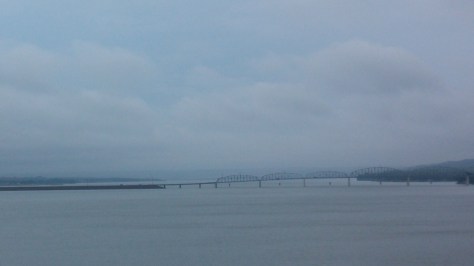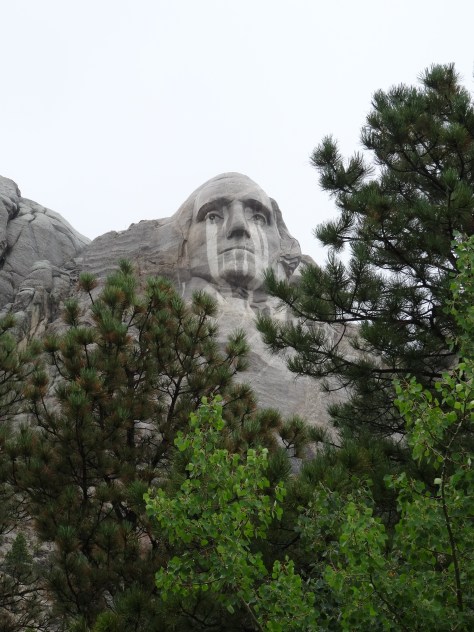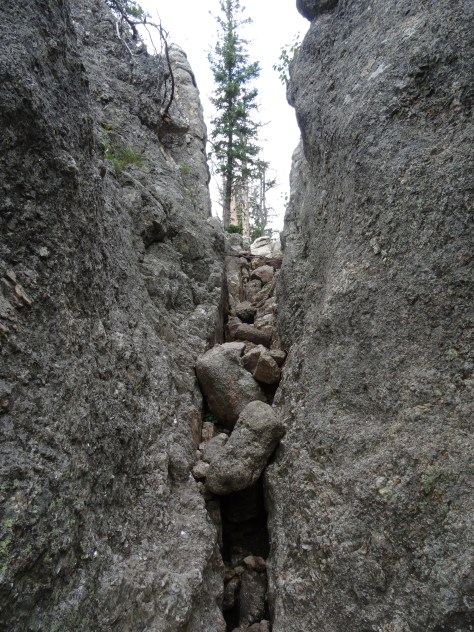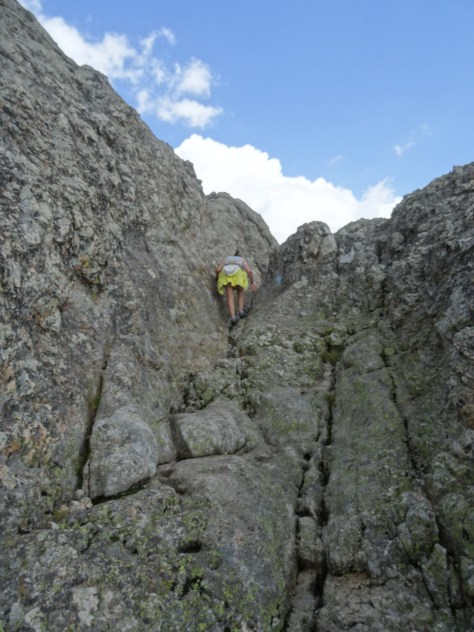ACROSS THE MID-WEST
We actually took three days to drive the 1,000 miles across the remaining mid-west to its western edge in the Black Hills National Forest. Neither Trey nor I recall the exact reason, but agree that the difficulty booking accommodations in the Black Hills may have influenced that decision.
As it was, we spent the first evening after departing Chicago in Des Moines, Iowa. Not a completely unremarkable city in that we could see for miles from the unobstructed view of our third floor hotel room where we had arrived just in time to see a somewhat remarkable sunset.
We had not traveled far down Interstate 80 the next morning when I saw a sign for the turn off to Madison County and its famed bridges. We did not turn and I felt a tinge of disappointment at the time which has since turned into regret — I will have to get back there.
We were to cut up Interstate 29 just east of the Missouri River which serves as the border between Iowa and Nebraska. Instead, we detoured across the Missouri and looped through the city of Omaha just so we could say we’d been to Nebraska – a first for both of us.
The reasons behind our Black Hills booking difficulty began appearing more numerously as we headed further west – Motorcycles. As in Chicago, our visit to the Black Hills had unknowingly coincided with a major tourist event – this time it was the 74th Annual Sturgis Black Hills Motor Classic.

After crossing the Missouri a third time and into the town of Oacoma, South Dakota, ours was one of only a few automobiles spattered among the Harley Davidsons parked outside of the Howard Johnson’s for the evening.
Soon after departing Oacoma, the landscape changed to rolling mounds of a golden color that I had never seen in nature. I failed to capture a photo so the image lies solely in my memory.

THE BLACK HILLS
We had felt lucky to have snagged the last available room at the Coyote Blues Village Bed and Breakfast when we had called the owner from a payphone in Ottawa. We hadn’t know just how lucky we were until we had arrived at the secluded, yet conveniently located inn outside of Hill City, in the heart of Black Hills National Forest.

The owners are from Switzerland and were just as charming and welcoming as the surrounding environment. It was full of European charm from the Swiss chalet feel of the inn to the traditional breakfasts of cured meats, cheeses, eggs and fruit. Each guest room is decorated in a different theme. We stayed in the Turkish room and had a private patio and sauna overlooking the valley below the inn. We took advantage of the views, patio and sauna each of the three nights of our stay.

We also enjoyed breakfast each morning on an outdoor deck with friendly bikers and travelers, and loved the comradery and sharing stories of the road.
Mount Rushmore
Once we had settled into our room, we headed to nearby Mt. Rushmore with the excitement of children. It was raining and the wet winding roads were challenging for the bikers, but provided us with a unique photo opportunity.


The park service has done a nice job in tastefully accommodating thousands of daily visitors while preserving, best as possible, the mountain’s and surrounding area’s natural states. The walk way up to view the monument, along with the amphitheater at its base are a bit over the top, yet successfully achieve the goal of provoking patriotism.

We highly recommend an evening visit for the film on the monument’s history and stories of each of its presidents.

The evening program ended with a touching tribute to our country’s armed services’ veterans.

Hiking in Custer State Park
Sylvan Lake in Custer State Park provides access to over a dozen trails including South Dakota’s 111-mile Centennial Trail that wends through the Black Hills from Butte Bear in the north to Wind Cave National Park in the south.

We chose, at the recommendation of a fellow traveler, to tackle the less lengthy trek to Little Devil’s Tower. The trailhead is located a mile east of Sylvan Lake’s parking lot and the trail is an easy walk through a grassy birch forest for about the first half mile…

at which point it becomes increasingly more difficult.

It is the last section that earns this hike the label of “strenuous” as the trail sharply ascends through and over rocky passages to the apex.

The surrounding views from the top of Little Devil’s Tower are well worth the trip — being surrounded by the Black Hills with Black Elk Peak (Harney’s Peak at the time) and its stone tower to the north…

and Cathedral Spires to the southeast.

Gorgeous!
We then drove east on Highway 87 from Sylvan Lake and through a section called “Needles Highway” for the towering spires that the road twists around.

Several narrow tunnels on the route limit traffic to automobiles and motorcycles, so no RV’s or trucks.

Crazy Horse Monument

This massive sculpture has been a work in progress since 1948 and has received no federal funding, per the wishes of Oglala Lakota Chief Henry Standing Bear who had envisioned such a memorial to honor all Native Americans. Chief Standing Bear had been inspired, so to speak, by the carving of nearby Mt. Rushmore.
The design is based on a pointing gesture and response that Crazy Horse is said to have given a snarky U.S. Calvary man who had asked him, “Where are your lands now?” Crazy Horse’s response was, “My lands are where my dead lie buried.”

The carving efforts have been in the hands of a single family, the Ziolkowskis, who rely on admission fees, gift shop and concession sales, and private donations to continue their work.
To provide some idea as to how tedious the hand carving process is, Crazy Horse’s face was unveiled in 1998. To provide a sense of the size the finished sculpture is to be at some point in the future, that will mostly likely be beyond my lifetime, Crazy Horse’s pointing arm is 263 feet long and his horse’s nostrils are to be 26 feet in diameter.
~~~
The Black Hills were a fitting first step into the wild and beautiful west and provided us with a taste of the wonder that laid before us.
Up Next, Devils Tower and the Battle of Little Bighorn National Monuments…
Meanwhile, here’s some more of our favorite pics!










Makes me want to go. Love the history and the beautiful pics!
LikeLiked by 1 person